In partnership with IranWire, the renowned Iranian cartoonist Mana Neyestani has created a new graphic novel entitled The Crash, Covid-19 and Other Iranian Stories: a visual account of the events of early 2020 that shaped the course of the pandemic in Iran. In this article, IranWire’s founder Maziar Bahari interviews Mana about the process of producing the book and how its four principal characters were devised.
Have you ever been punched in the jaw? The best of Mana Neyestani's cartoons remind me of exactly that. The pain goes from your brain to your eyes, travels through your heart down to your gut, and then suddenly, you're out cold. The tragic beauty of the drawings disarms you, hurts your feelings. You can never forget them.
Mana has experienced Iranian tragedy firsthand. He was jailed and threatened with the death penalty over a cartoon he’d drawn in Iran in 2006. Since then he has lived in exile, first in Malaysia and now in France. But wherever he is, Mana remains an Iranian artist. His cartoons make you feel the pain of his people: ordinary, peaceful Iranians, artists, workers and teachers, now betrayed, brutalized and held hostage by a regime of ideological criminals.
Since November 2019, when hundreds of protesters were murdered by Iran’s security forces during uprisings triggered by a hike in fuel prices, Mana's dark and biting satire has packed even more of a punch. That month, the government also shut off the internet for a week so the killers could carry out their actions with impunity. None of the authorities have been brought to justice for these murders, but many of the demonstrators are still on death row.
Just a few months later on January 8, 2020, the Revolutionary Guards shot down a Ukrainian Airlines passenger plane over Tehran, killing all 176 people on board. Again, not one person has yet stood trial for the deaths of these innocent civilians.
The Islamic Republic's failure to manage the coronavirus epidemic has once again brought everything we knew about the regime's incompetence and corruption to the fore. The government says 57,000 people in Iran have died from Covid-19. We know the real figure is much higher, but anyone who says so in Iran is charged with acting against national security.
Mana’s new graphic novel opens in February 2020, a time when the Iranian state knew that a new disease was killing people in China, but chose not to act for political and economic reasons. Flights between Iran and China continued apace, mass rallies were held in the streets to mark the Anniversary of the Revolution on February 11, and the parliamentary elections went ahead on February 21 even as dozens of Iranians were lying in hospital sick with Covid-19. Those who spoke out about the dangers were arrested and punished. The first deaths were covered up by the security forces. By the time the crisis was officially acknowledged, it was too late.
Mana’s book follows the journeys of a group of fictional Iranians through the resultant ruins of their country and their lives. I asked Mana about these characters and how they came to be.
How did you come up with the characters in this graphic novel?
I felt it would be interesting to show the daily lives of Iranians during the pandemic through the four main characters of the story. We see a journalist who considers it his duty to provide accurate information on Covid-19 statistics; a writer who used to believe in reform but as a result of recent events has become frustrated; a Quran teacher who lives in the city of Qom and supports the regime; and finally a nurse, a member of one of the most neglected and pressurized groups in society during the pandemic.
What's the story of these characters?
The truth is that the content of the book is not all that dramatized. The story begins with the writer, who lost a loved one on Ukrainian Airlines Flight 752, which was shot down by the Revolutionary Guards in January 2020. He is disillusioned and no longer wants to participate in politics. This happened shortly before the 2020 Iranian parliamentary elections, before which state television was full of exhortations for people to go to the polls.
The writer's character seems to be similar to your own; you also worked for reformist media, and you lost a loved one in the Flight 752 incident.
Naturally, the work doesn't detail the characters' lives; that is the difference between a short story and a long story, and more attention is paid here to situations. In any event, the person in question is a novelist or an author with a reputation. In devising his character, I was inspired not only by myself but also by others I know and those affected by the Ukrainian plane crash.
Like your brother Touka, and his son, whose fiancé was killed?
I didn't want to name them, but yes, that's right. My brother Touka in particular suffered a great deal, and in all the works he has produced over the past year, we see a trace of that plane. This event also has a symbolic property in my own work. There is the character of the author, and there is also the plane; that is, it seems to be crashing in his mind.
Is the journalist in the book based on Iranian investigative journalist Mohammad Mossaed?
Yes, Mossaed was one of my sources of inspiration for the journalist. I've been inspired by Mossaed and all the journalists in Iran who've paid the price for what they have uncovered. I also drew on the character of Mahmoud Shahriari, who warned in Instagram videos about the spread of coronavirus in Iran and kept on asking questions; we finally saw that Shahriari was arrested and reprimanded. The character I portray is not entirely derived from either, or from any other journalist or media activist, but is a fictional being who exhibits parts of all these people.
How did you approach the character of the nurse?
The character of the nurse was perhaps one of the most distant and difficult. Because, unlike writers, journalists, and Quranic teachers, I'd never been in contact with nurses. I also tried to consider the character of a woman, regardless of her job, who acts contrary to the dominant ideology of her society. Some of the ideological slogans have been meant to honor medical workers by calling them war heroes, but those who chant the slogans never consider the fragility, hardships, and even despair borne by nurses. I tried to reflect their pain and suffering. Like other members of society, these nurses are also dealing with low salaries and poverty. And like the rest of us, they’re just tired.
Tell us more about this exhaustion. Everyone I'm talking to these days complains about burnout. It seems in the last year that people everywhere, and especially the people of Iran, are more frustrated and tired than ever before.
It's because of the accumulation of a series of tragic events, the lack of an escape route or a chance to breathe, and the stifling of those few small windows of hope. This situation is not something that has arisen suddenly: it is the result of 40 years of the current regime in Iran.
Until 20 years ago, I think, many Iranians believed positive change and reform could take place. Unfortunately the government was ruthless and didn't take one step toward meeting their demands. In the waves of protest that have taken place in the last 20 years, such as in 1999, 2009, 2018 and 2019, we see the frustration and anger. Each time, they're confronted with a hammer-blow of repression and suffocation by the government, and the windows of hope are closed. This has created a feeling of collective exhaustion.
What's the main difference between this and the daily cartoons you draw?
The main difference between a cartoon and a graphic novel is that it has more time and space for storytelling and characterization. Not that a cartoon doesn't have a story, but the nature of a story in a drawing or editorial cartoon is entirely different from graphic novels. In a cartoon, we have one frame to tell a short story and to describe what is happening in society. There isn’t enough time for in-depth characterization. In a cartoon, we have to introduce all the characters in one frame: both the killer and the victim. This sometimes leads to questions and ambiguities and criticism as to why, for example, a character is shown as negative or positive in a cartoon. So, I have to resort to stereotypes. For example, when I want to draw about the Ukrainian plane's downing, I have to show the Revolutionary Guards' direct responsibility.
Do you agree that you've become more critical of the Islamic Republic over the past year?
I believe cartoons should reflect the current situation in a country's socio-political reality. Naturally, I have no choice but to reflect the mood of the people of my country. This is true for all political cartoonists in every country. In a country like the United States, when a president comes to power whose performance is criticized by the people, the tone of editorial cartoons also becomes sharper and more critical. An editorial cartoon is a mirror of society. The conditions of the cartoonist also affect the quality and style of the work. I'm not a machine, and in the current situation, my mood and personal outlook are undoubtedly influenced by negative forces. But if I ever feel that real reforms or positive changes and improvements are being made for the people, I cannot turn a blind eye to them either.
visit the accountability section
In this section of Iran Wire, you can contact the officials and launch your campaign for various problems




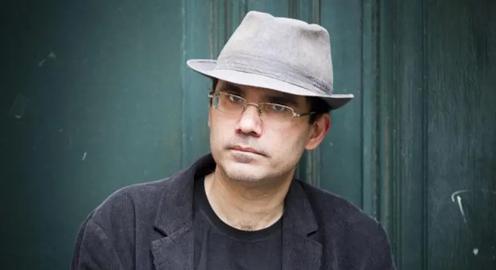
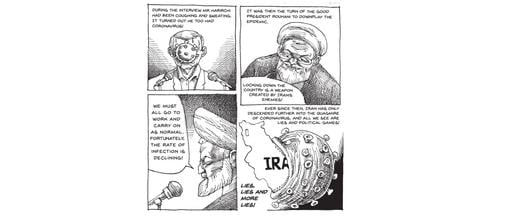
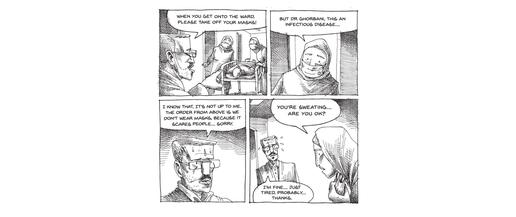
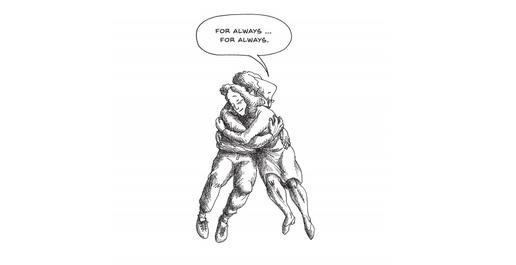




















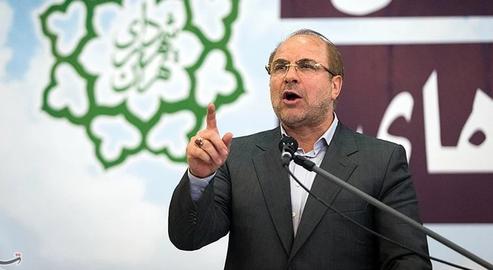
comments